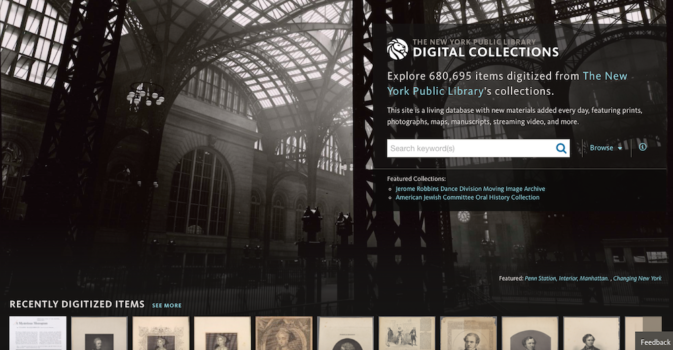Business

NYPL’s Cram to Talk Copyrights at ‘Rights & Metadata Madness’ Event
Story Highlights
The New York Public Library (NYPL) system features more than 51 million physical items across more than 90 locations. And digitizing even a portion of that means a metadata and rights information system that works like no other.
Helping oversee that rights management system is Greg Cram, associate director of copyright and information policy for NYPL, who’ll share his insights in the opening keynote of the inaugural “Rights & Metadata Madness: Where Legal Meets the Digital Supply Chain” event July 20 in New York City.
The keynote — “Rights Information in a DAM: Here is How We Did It” — will offer NYPL as a use case example for content owners and distributors, who have to address increasing copyright concerns as they build bigger and bigger digital repositories.
Cram spoke with the Media & Entertainment Services Alliance (MESA) about what attendees at the event can expect from his keynote, covering the information stored in the system, how the information is being made programmatically actionable, and how NYPL calculates the copyright status of any item.
MESA: What makes the NYPL rights metadata management system stand out, and what are the challenges associated with ingest and retrieval?
Cram: Because NYPL’s collection represents a wide range of content, from cuneiform tablets to the latest bestseller, we need a way to record information pertaining to the use of a variety of collection items. Our rights metadata management system was designed so that we could record factual information that could impact how items in our collection can be used and made available to our patrons. That means we need to record information about the copyright status of items, as well as any contractual agreements that would change the default copyright rules. We also need to be able to do this at scale.
Our system is unique in that we record more rights metadata than a typical asset management system you might find in cultural heritage institutions today. Recording more information in standardized ways allows us to differentiate our uses of digitized collection items in more powerful ways. For example, using our rights system to identify and mark collection items that are in the public domain allows us to offer our users high-resolution files for download on our website without additional restrictions.
One challenge for us is the amount of work it takes for us to create accurate and dependable information. Our collection spans such vast times and geography that determining the copyright status of items can be difficult. When seeking licenses from rightsholder, simply identifying and locating those rightsholders can be a difficult task.
MESA: How does the system specifically address copyrights, and who does it benefit?
Cram: We use our system to record the copyright status determinations we make when reviewing collection items. In the United States, calculating the copyright status of an item can be complicated. Specific factual information is often necessary before we can determine when the copyright will expire in an item. That means we take great care in recording as much factual information as we can that will help us determine the copyright status of items. Having that information recorded will also help us should the law ever change.
Our system is beneficial both to our users and the rightsholders of items in our collection. For our users, they will have the benefit of our research into our collections so that they can make informed decisions about their use of collection items. For rightsholders that license their works to us, we are able to fulfill their desire to expose their items in our digital collection platform to our users. When our users want to seek licensing from rightsholders, having rightsholder information in our system allows us to make the connection.
MESA: Are there different challenges in managing copyright information for different digital assets (text, video, audio)?
Cram: There are unique challenges for each item format in our collection. For example, photographs of people might require an analysis of the subject’s rights of publicity when determining how the photograph can be used. Printed textual material might contain works created by third parties that will have their own copyright information and status that is independent of the book it was published in.
As we move into more complex items like audio and moving image material, the complexity around rights grows exponentially. For a recording of a musical performance, there may be many rightsholders, some of which might not be easily identifiable. Moving image material can be even more complex, especially recordings that capture many different copyrighted works. Our system is under constant development to adapt to these challenges.
The 2016 “Rights & Metadata Madness: Where Legal Meets the Digital Supply Chain” event is being sponsored by FilmTrack and produced by the Media & Entertainment Services Alliance (MESA) and Smart Content Council. To register, click here. For sponsorship information, contact Garrett Randall at [email protected].









